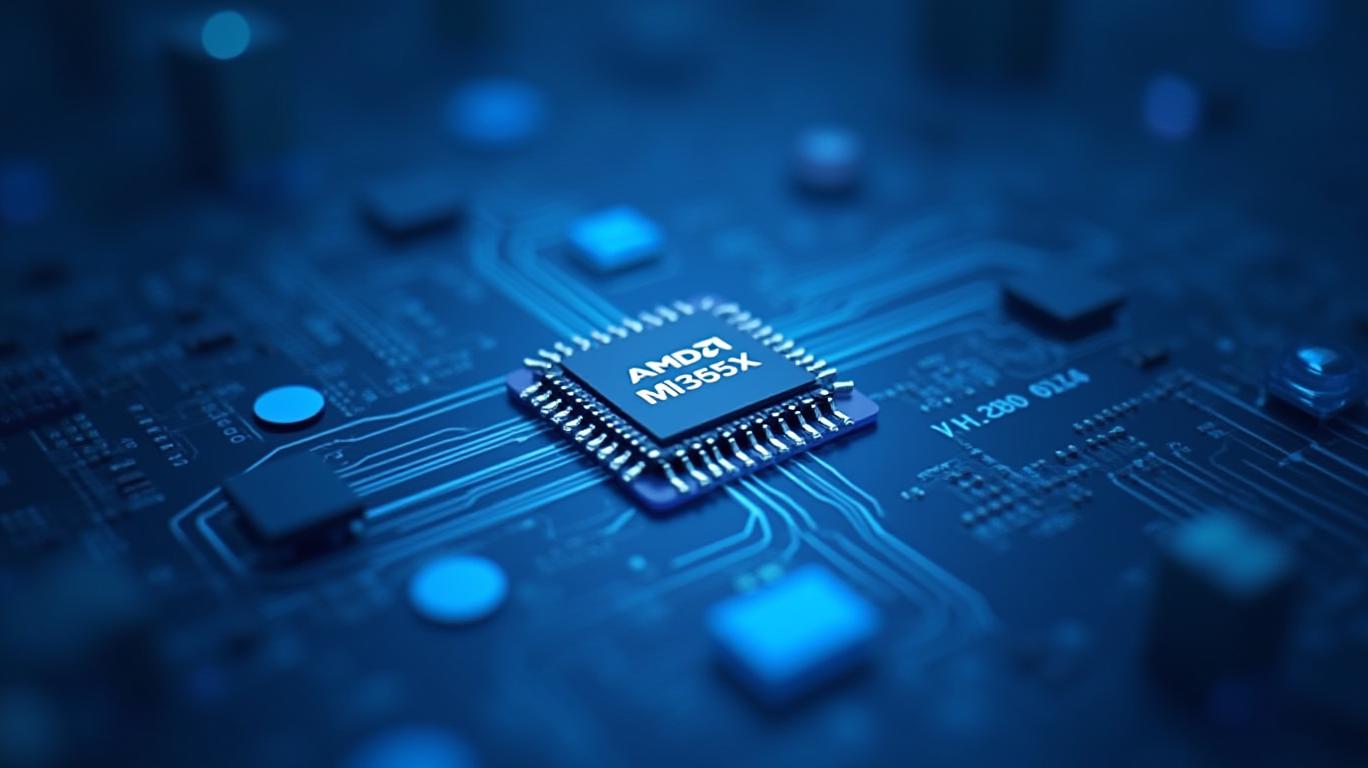AMD’s $3 Billion Move to AI Dominance: Why This Divestiture Signals a Stock Takeoff
AMD’s strategic divestiture of ZT Systems’ manufacturing operations to Sanmina for $3 billion marks a pivotal shift toward AI infrastructure leadership. By offloading capital-intensive production,
is positioning itself to dominate the $500 billion AI accelerator market, while reducing operational complexity and unlocking capital for high-margin chip design. This move contrasts sharply with NVIDIA’s vertically integrated model, creating asymmetric value for investors. Here’s why the stock is primed for a $140+ run in 12 months.
The Divestiture: A Masterclass in Strategic Focus
AMD’s sale of ZT’s manufacturing arm—valued at up to $3.45 billion with performance-based contingent payments—achieves two critical goals:
1. Capital Liberation: The upfront $2.55 billion in cash and equity immediately reduces financial risk while fueling R&D for AI chips like the upcoming MI355X series.
2. Operational Simplification: Sanmina’s expertise in U.S.-based manufacturing and liquid cooling technologies (critical for high-performance AI systems) ensures seamless production, allowing AMD to focus on its core strength—designing and selling AI chips.
The deal retains AMD’s control over ZT’s AI systems design teams, which integrate its GPUs, CPUs, and networking silicon with ZT’s rack-scale capabilities. This division accelerates time-to-market for cloud-scale AI solutions, a $500 billion market by 2028, while Sanmina’s global facilities in Texas, New Jersey, and the Netherlands provide scalability.
Why This Move Beats NVIDIA’s Playbook
NVIDIA’s dominance in GPUs has been unmatched, but its vertically integrated model faces execution risks in manufacturing and supply chain bottlenecks. AMD’s partnership with Sanmina flips this dynamic:
- Lower Capital Expenditure: AMD avoids the $10+ billion costs of building and maintaining factories, redirecting resources to AI innovation.
- Scalability: Sanmina’s $5–6 billion annual revenue contribution post-integration ensures AMD can scale production without diluting margins.
- Geopolitical Flexibility: U.S.-based manufacturing aligns with AI infrastructure trends, where governments prioritize localized supply chains.
In contrast, NVIDIA’s H100 and H200 chip production relies on Taiwan Semiconductor Manufacturing (TSMC), exposing it to geopolitical risks. AMD’s strategy reduces such dependencies, offering a safer bet in a fragmented AI landscape.
The Mizuho Bull Case: $140+ Target Isn’t a Stretch
Mizuho Securities recently raised its price target to $135, citing AMD’s $10 billion AI partnership with Saudi-based HUMAIN and its robust product pipeline. But the $140+ case gains momentum when considering:
1. Sanmina’s Performance Incentives: The $450 million contingent payments are tied to ZT’s future revenue, aligning Sanmina’s interests with AMD’s AI growth.
2. Margin Expansion: AMD’s gross margin rose to 54% in Q1 2025, and outsourcing manufacturing could boost this further.
3. Buyback Power: The $6 billion repurchase program (totaling $10 billion) amplifies EPS growth, a key driver for stock appreciation.
Risks? Check Them Off
Bearish arguments often cite AMD’s 99-basis-point dip in microprocessor market share (to 21.1%) and U.S. export restrictions on its MI308 chips. But these are manageable:
- The MI355X series, launching in late 2025, will replace the MI308’s China sales, mitigating the $1.5 billion revenue hit.
- AMD’s AI partnerships (e.g., Open Telecom AI Platform with Cisco/Nokia) are diversifying its revenue streams.
Final Verdict: Buy AMD Now
AMD’s divestiture isn’t just a cost-saving move—it’s a strategic pivot to AI supremacy. With Mizuho’s $135 target as a floor, the stock’s asymmetric upside in a red-hot AI market justifies a $140+ price target within 12 months. The $3 billion transaction reduces execution risk, unlocks capital for innovation, and positions AMD to outpace NVIDIA in the cloud AI race.
Investors should act now: Buy AMD, and let the AI boom do the rest.
Risk Disclosure: Past performance is not indicative of future results. Investors should consider their risk tolerance and consult financial advisors before making investment decisions.

Comments
No comments yet